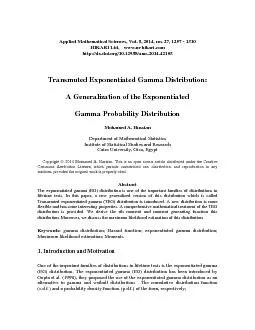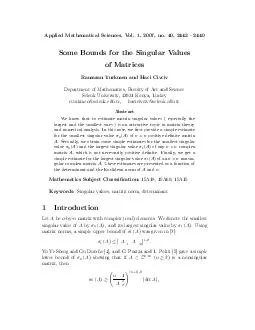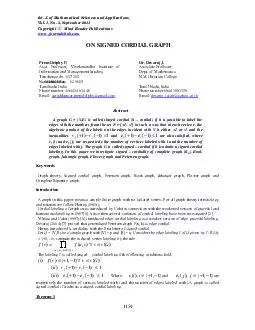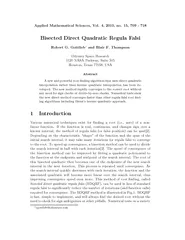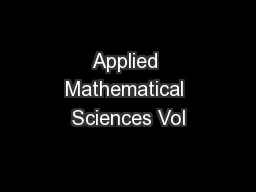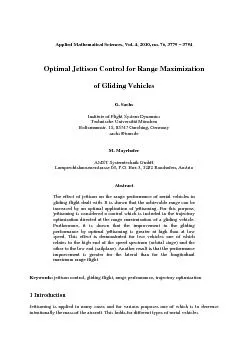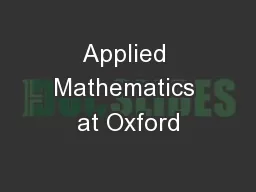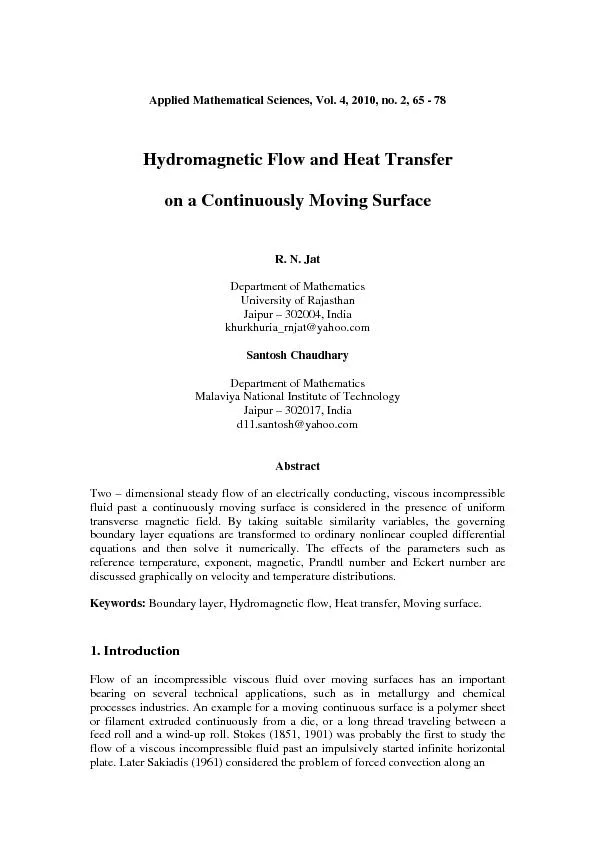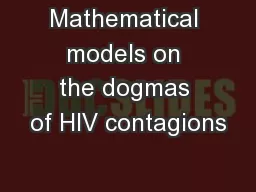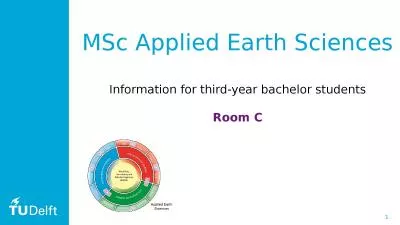PDF-Applied Mathematical Sciences, Vol. 8, 2014, no. 2
Author : celsa-spraggs | Published Date : 2015-11-19
7 12 97 1 310 HIKARI Ltd wwwm hikaricom httpdxdoiorg1012988ams20144 2105 Transmuted Exponentiated Gamma Distribution A Generalization of the Exponentiated Gamma
Presentation Embed Code
Download Presentation
Download Presentation The PPT/PDF document "Applied Mathematical Sciences, Vol. 8, 2..." is the property of its rightful owner. Permission is granted to download and print the materials on this website for personal, non-commercial use only, and to display it on your personal computer provided you do not modify the materials and that you retain all copyright notices contained in the materials. By downloading content from our website, you accept the terms of this agreement.
Applied Mathematical Sciences, Vol. 8, 2014, no. 2: Transcript
Download Rules Of Document
"Applied Mathematical Sciences, Vol. 8, 2014, no. 2"The content belongs to its owner. You may download and print it for personal use, without modification, and keep all copyright notices. By downloading, you agree to these terms.
Related Documents

